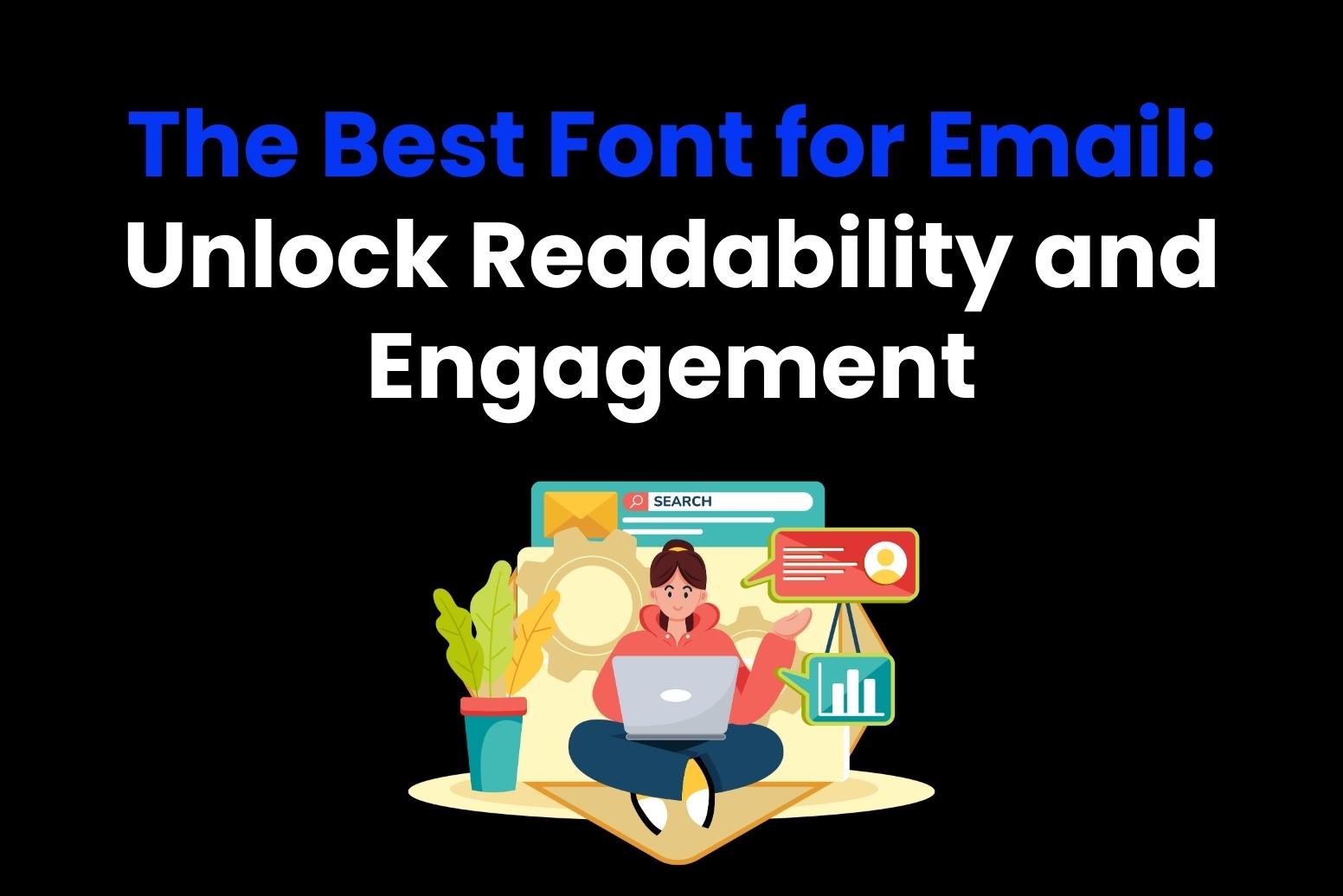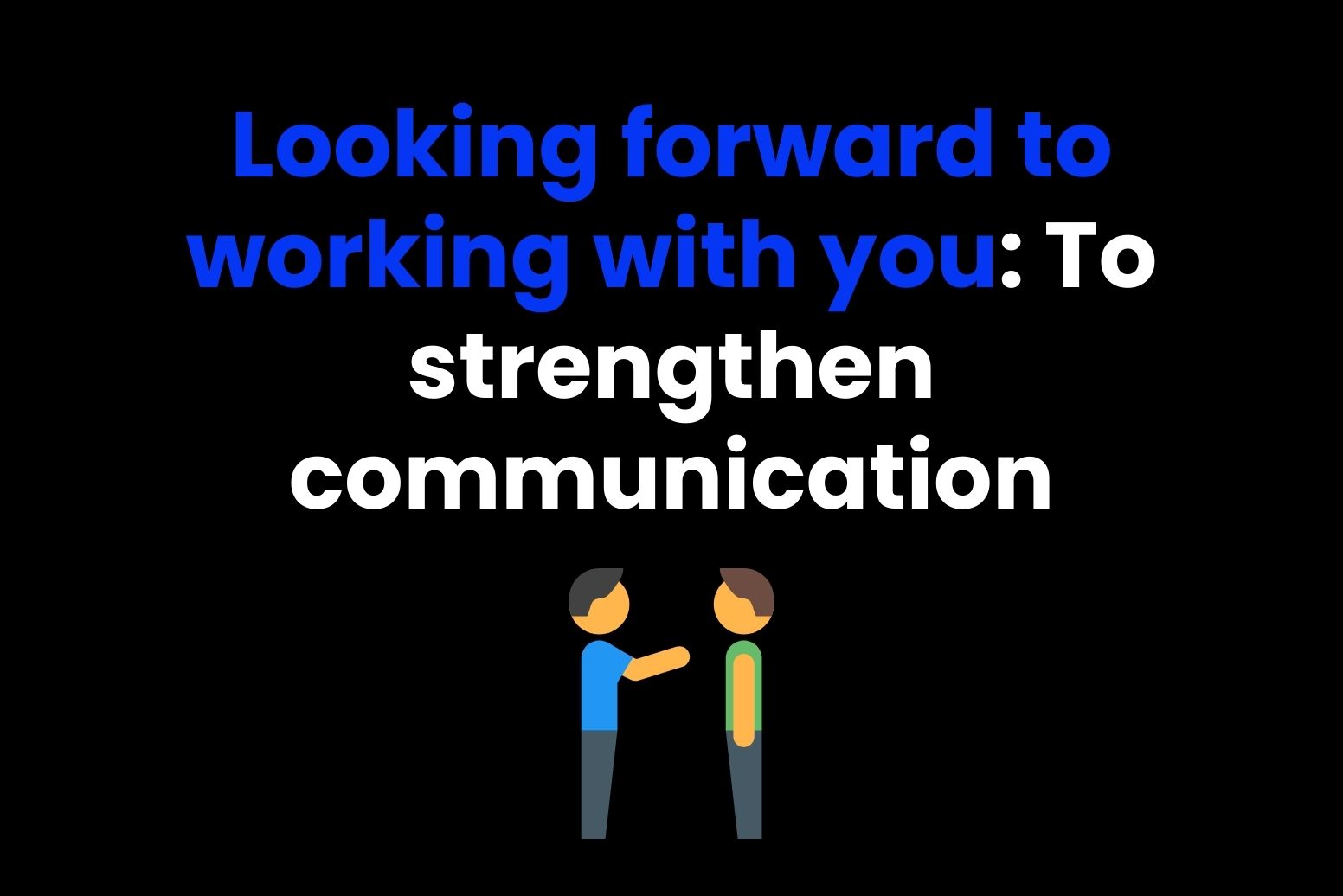You probably spend time and effort designing emails. But what about email fonts? What is the best font for email? “Choosing the right font is not difficult in email marketing, but you need to consider it carefully. While you spend hours creating email copies, it is the end of the book that you cannot read or the impression of the brand becomes bad. Arvin AI plays an important role in the look and feel of email. This guide describes different font families and font styles. We will also introduce how to choose the best font to express your brand image and convey your message.

Why Choosing the Right Font for Emails Matters
1. Professionalism and Brand Consistency
The best font for email you pick can establish how your email is received.
- Trust and Authority: Professional best font for email is more likely to make recipients trust your message as they ascribe professionalism in business communications. For instance, clean formal best font for email like Arial or Helvetica conveys competence and dependability.
- Brand Alignment: Fonts will align with the identity of your brand. If your communication tone is modern, playful, or traditional, ensuring the cohesiveness of such an email and other forms of communication will make the brand more recognizable and professional.
2. Readability Across Devices
Email recipients open messages on all sorts of devices and platforms. One has to ensure that readability is achieved.
- Cross-Device Compatibility: Verdana and Georgia are best font for email will be great on the desktop, tablet, and smartphone
- Clean and Legible Fonts: through correct letterspacing and absolutely clear letterforms, such fonts promote good legibility, less likely to send your email to the spam folder or read once.
3. Psychological Impact of Fonts
Fonts do more than just deliver information; they can elicit emotions and inspire actions.
- Emotional Influence: Fonts can create warmth, a sense of urgency, or professionalism. For example, sans-serif best font for email such as Calibri indicates simplicity and modernity, while serif fonts such as Times New Roman indicate formality and tradition.
- Research-Backed Insights: Research has shown that clear fonts not only improve the readers’ retention but also increase the chances of the audience to take action on your CTA. MIT reported that the fonts directly influence the believability and credibility that the message sends to readers.
Key Factors to Consider When Selecting Email Fonts
1. Device Compatibility
Always ensure that the fonts applied are rendered across a wide variety of email clients like Gmail, Outlook, Yahoo Mail, and Apple Mail. This, therefore, falls into a safe compatibility in all operating systems and devices as well. It is quite safe to use web-safe best font for email such as Arial or Verdana. It is also imperative to include fallback fonts in your CSS code in case the primary font does not load.
2. Readability and Size
Readability is fundamental to all email communications. Fonts should be readable on screens, small or otherwise. For body copy use font sizes between 14px and 16px to ensure visibility, but headings can range from 18px up to 22px to highlight some of the salient messages. There should appear to be simple fonts, sans-serif body copy so that messages take fewer strain s to become meaningful.
3. Accessibility Standards
Available fonts improve readability for visually impaired clients. Use best font for email with high contrast between the text and the background and does not use very thin or fancy fonts. Features such as open counters (spaces in letters) and consistent letter spacing improve the text reading. Open Sans and Verdana are good fonts for accessibility. In addition, follow WCAG (Web Content Accessibility Guidelines) so that your email will be accessible to a more audience.
4. Branding Alignment
Your font choices should align with your company’s branding to keep the identity consistent. If your brand is using Helvetica or Montserrat on its website, apply the same in emails for a seamless experience. Typography through various channels will solidify brand familiarity and instil trust. Make sure your preferred fonts are both practical and beautiful in the emails, walking that fine line of design and functionality.
Top 10 Best Font for Email
1. Arial
Arial is a versatile sans-serif type, often used, and regarded as a web-safe font, guaranteed to appear correctly on all significant email clients and devices. Simple yet clear, Arial is a friendly and professional font for formal and informal emails. The best font for email clean design with well-balanced letterforms renders it highly readable, even at small sizes.
2. Helvetica
A timeless sans-serif font that is praised for its neutral modern look. Frequently used in corporate communications, it speaks of professionalism but maintains a sleek, modern feel. It is consistent in the letter spacing and uniform strokes guaranteeing perfect readability. However, it may not be present on all the systems so fallback fonts are recommended.
3. Open Sans
Open Sans is a modern, humanist sans-serif font specially designed for digital readability. Its wide letterforms and generous spacing make it accessible and pleasant to read in any device screen. This font gives a friendly yet professional tone for body text or headings of marketing emails or newsletters.
4. Roboto
A very flexible sans serif developed by Google, Roobo has geometric forms to create subtle curves and offers a good balance between precision and natural readability. It can be used for creatives, technical related, or creative emails since it also exemplifies flexibility in design. Use them for headings, body texts, buttons, etc.
5. Verdana
Verdana was created with broad, open lettering and extra spacing to read clearly on a monitor. Clear at small sizes, this sans serif font is nice and easy to read. Use it for any email that’s professional yet approachable-perhaps a customer service email or an update on a product.
6. Times New Roman
Times New Roman is a formal, traditional serif typeface. Often found in academic and official communication, the elegant style of a professional email is well fitting for this. Being great for long blocks of text, the smaller point size might need some sizing in digital versions to read well.
7. Georgia
Georgia is the serif typeface meant for on-screen reading that appears traditional, yet approachable. Though its x-height surpasses Times New Roman, it makes it easier to read on screens. Businesses seeking an email writing style that is professional yet warm will love Georgia.
8. Lato
Lato is a clean modern sans-serif typeface with a very friendly feel to it. It has rounded edges and slightly condensed letterforms, which makes it both very striking yet at the same time very readable. This is frequently used in creative and promotional emails but is versatile enough for both formal and informal messages with a polished look.
9. Montserrat
The Montserrat font is a stylish sans-serif inspired by urban typography. With clean lines and a bold structure, it’s great for emails aimed toward branding or creative campaigns. This versatility works well for both headlines and body text, making even the simplest designs sophisticated.
10. Calibri
The sans serif Calibri was used instead of the traditional Times New Roman in Microsoft Office. Calibri is popular because it looks very polished and discreet, perfect for use on professional e-mail. Calibri text can be read with clarity even on smaller best font for email and thus much more suitable for business communications and internal mail.
Customizing Email Fonts to Enhance Engagement
1. Personalizing Fonts for Marketing Campaigns
Choosing the right font for your marketing emails can significantly impact how your message is received. A/B testing is a crucial technique for determining the most effective best font for email for your audience. This involves sending variations of the same email with different fonts to test which garners higher open and click-through rates. For instance, a bold sans-serif font like Arial might work better for promoting tech products, while a classic serif font like Georgia may suit luxury goods. Analyzing data from these tests ensures your emails align with audience preferences, boosting engagement and conversions.
2. Tips for Formatting Emails with Fonts
Formatting plays a major role in readability and in making text look pretty. Use line spacing of 1.2 to 1.5x the font size to remain readable on smaller screens. Also keep good contrast between text color and the background to read comfortably; dark text on light background is ideal. Align text properly- by default left-aligned improves scanning. Avoid using too many different fonts in one email; keeps it a smooth and professional-looking effort.
3. Tools to Test and Preview Fonts in Emails
Try to test and preview email fonts on different devices and email clients to steer clear of formatting troubles. Tools like Litmus, Email on Acid, and Testi@ allow you to preview how your email font will appear on various platforms. In addition, these tools flag incompatibility issues that you can correct before finally sending the email. In this way, you are sure to have a well-polished and consistent experience with all recipients.
Arvin AI – Your Font and Email Design Solution
Arvin AI is a next-generation platform designed specifically to revolutionize your email design experience. By using cutting-edge AI technology, it offers smart tools for optimal font selection for readability and also visual appeal in layout. The product makes it easy to create beautiful and accessible emails on any device or email client Whether it’s a mass email marketing campaign or a personal newsletter, Arvin AI ensures the process goes super smooth. The smart recommendation saves you time, while customization allows you to maintain brand identity readily. Arvin AI makes achieving professional and interesting email designs easy.
Key Features of Arvin AI
- AI-Powered Font Recommendations: Arvin AI analyzes your email content and audience profile to suggest fonts that best match your objectives.
- Font Compatibility Checker: Your selected best font for email will render fine on different devices and email clients, so any inconsistency is averted.
- Real-Time Email Preview: See exactly how your email will look with chosen fonts for perfection before the final send.
- Accessibility Features: Incorporates features like dyslexia-friendly fonts and appropriate contrast levels, making emails inclusive for all recipients.
How to Use Arvin AI for Email Fonts
Step 1: Sign up and log in to Arvin AI:
Create your account on Arvin AI’s website and log in to access its email writing tools in the product section.
Step 2: Upload Your Email Draft or Design:
Import your email draft or paste your design directly into the platform. And ask them to write it .
Step 3: Discover Fonts That Best Suits Content and Audience:
Arvin AI may suggest a list of best-suited fonts for your email content and target demographics based on high engagement potential.
How to Pair Fonts for Email Success
1. Importance of Font Pairing in Design
Proper font pairing is critical to creating beautiful-looking emails that engage readers and are professional. By balancing headers, subheaders, and body text, you guide the reader through the content smoothly yet maintain a consistent look. Headers should be bold and “eyecatching,” subheaders should provide structure, and body text should favor readability. Well-paired best font for email guarantees clarity, enhance the hierarchy of your email, and reinforce brand identity.
2. Examples of Effective Font Combinations
- Sans-serif Headers with Serif Body Text: A clean combination of sans-serif fonts, such as Roboto or Open Sans for headers and classic serif body fonts like Times New Roman or Georgia, presents a well-balanced and professional face. The contract calls for attention while still being gentle on the eyes.
- Modern and Classic Font Blends: The balance between modern like Montserrat and Garamond can be a very nice blend for branding, and it always looks polished, whether it is the mix of modern styles and ageless styles.
Common Mistakes to Avoid with Email Fonts
1. Overloading with Multiple Fonts
Too many fonts in an email look cluttered, chaotic, and even overload the reader. Too many fonts take away from your message, and this design is seen as unprofessional, having an incohesive look. To maintain visual harmony, limit to two or three complementary fonts that play well with one another. For example, use a bold sans-serif font for headings and a clean serif for the body text. Limiting fonts will help focus, readability, and provides an overall cohesive aesthetic.
2. Choosing Fonts That Aren’t Web-Safe
More Fonts are not web-safe and might, therefore, render differently in all devices and email clients, meaning display issues could arise. Usually, if a specific font is not supported, an email platform will replace it with a default font, thereby spoiling your design and readability. Use web-safe fonts, like Arial, Verenda, or Helvetica. Such fonts are supported by nearly all and hence provide a smooth experience on the device and email of the reader.
3. Ignoring Font Size and Line Spacing
Readability tops the list for an email design checklist. If the text is too small or the line spacing is not sufficient, reading it is a chore, leading to eye pain and reduced engagement. Generally, a body text size is around 16px while line spacing is approximately 1.5 times the size of the fonts applied. It will ensure good readability yet leave an attractive and professional look.
4. Using Inconsistent Fonts Across Campaigns
Campaigns that don’t do this can and will have weak brand identity as well as confuse your audience. For instance, in every email having a different font will cause a lack of recognition and mushy your message. Consistency helps build trust and familiarity. Develop a style guide specifically defining fonts for headers, subheads, and body copy, and apply to all campaigns. It does a great reinforcement of the visual identity of your brand, fostering a cohesive look across communications.
Conclusion
To that end, choosing the appropriate fonts may make all the difference in creating an engaging, professional email. Keep the target audience in mind while using the maximum possible of readability and consistency of best font for email usage for easy and smooth passage through your content. Avoid common mistakes such as overloading with too many fonts or ignoring web-safe fonts altogether to ensure a polished presentation. Arvin AI simplifies font selection through smart recommendations and customization for better email design. With the right font strategy, engagement can then be improved, brand identity can be enhanced, and potentially better outcomes will be achieved.
FAQs on Email Fonts
The most commonly used web-safe email-friendly fonts are Arial, Verdana, and Helvetica. These guarantee that all fonts display in an email exactly the same on any device and email client that open an email with complete integrity as a clean and professional look.
Limit your email to two or three complementary fonts. Use one for headings, and another for body text, and optionally the third for accent. This helps in ensuring continuity and professionalism when designing.
Font pairing directly ties into a visual hierarchy that is easy to read and navigate from an email. The overall aesthetic is also enhanced, so your message really stands out and communicates well against your brand identity.
Of course, you can use custom best font for email, but most of them require support from most email clients. Or provide web-safe fallback fonts so rendering doesn’t fail with recipients.






